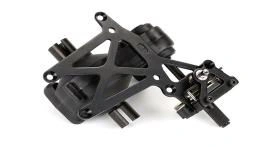Plastic Basic Parts

Plastic Basic Parts: Understanding the Building Blocks
Plastics, ubiquitous in modern life, are composed of fundamental components that determine their properties and applications. Understanding these basic parts is key to appreciating the versatility of these materials.
The Polymer Backbone
At the heart of any plastic is the polymer, a long chain-like molecule. Think of it as the skeleton. These polymers are created by linking together small, repeating units called monomers. The arrangement and type of monomers dictate the plastic's strength, flexibility, and other characteristics.

Monomers: The Building Blocks
Different types of monomers give rise to diverse plastics. For instance, the monomer ethylene is the foundation for polyethylene (PE), a common plastic used in packaging. The specific chemical structure of the monomer greatly influences the properties.

Additives: Enhancing Performance
To tailor plastic properties for specific uses, additives are frequently incorporated. These can include:
- Plasticizers: To increase flexibility and make the plastic easier to mold.
- Stabilizers: To protect the plastic from degradation due to heat, light, or oxidation.
- Fillers: To improve strength, reduce cost, or alter other physical characteristics.
- Colorants: To add color.

Processing Methods
The final properties of the plastic depend on the methods used to process it, this includes techniques like injection molding, extrusion, and blow molding

Understanding these basic parts is crucial for appreciating the complexity and versatility of plastics, and how they contribute to a wide range of applications.

